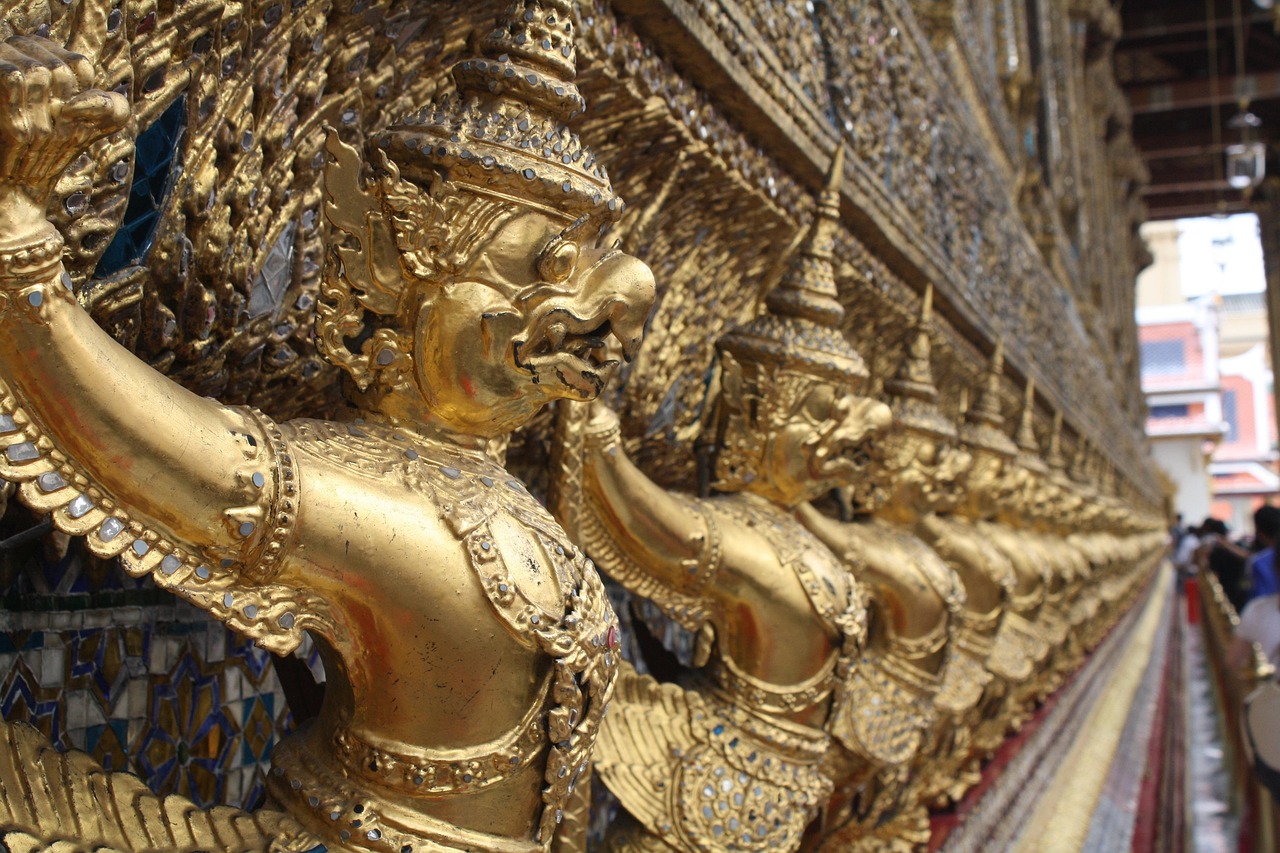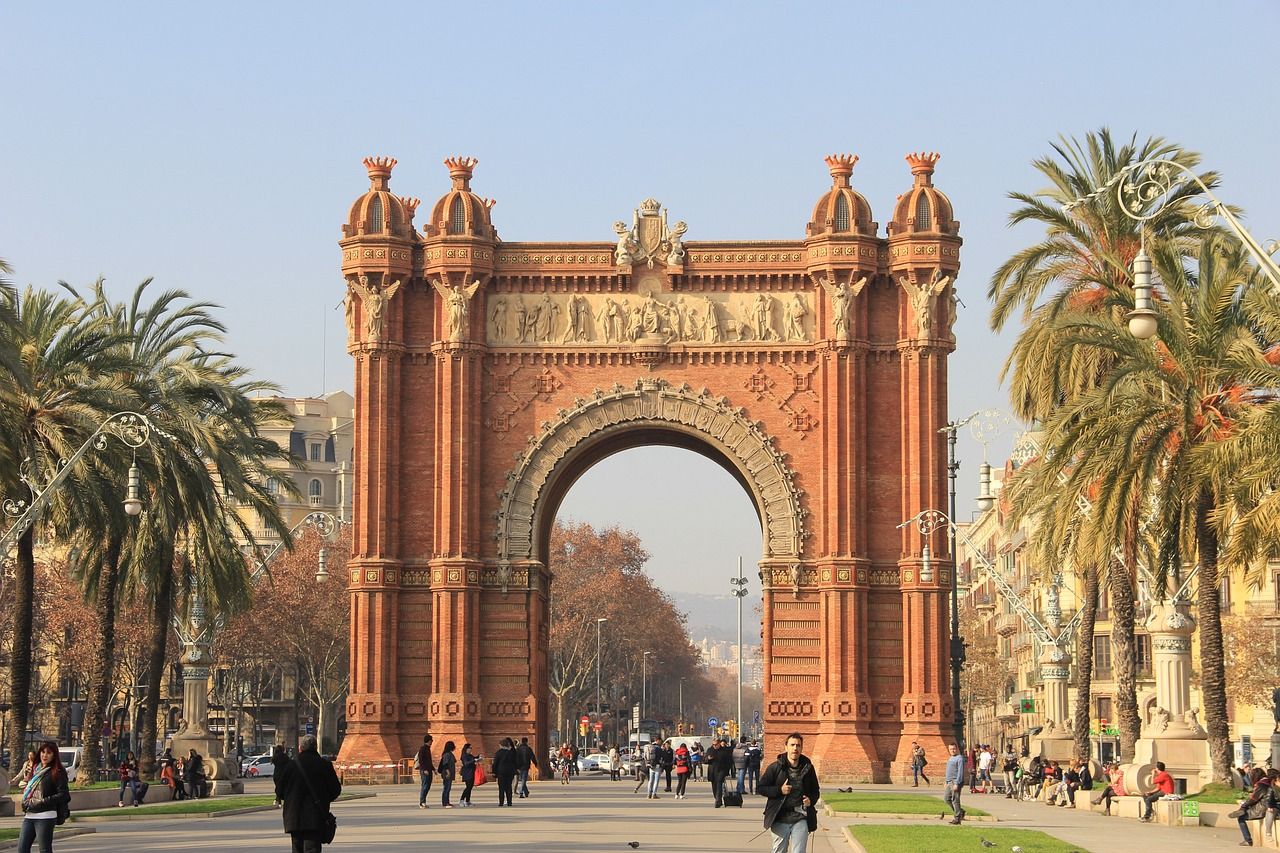
The world is a tapestry of breathtaking beauty, offering endless vistas from sun-drenched beaches to majestic mountain ranges and vibrant urban sprawls. For many, travel is about relaxation or a quest for thrilling new experiences. Yet, beneath the veneer of picturesque postcards, there exist corners of our planet where beauty intertwines with undeniable peril. These places beckon with unique allure but demand absolute respect and rigorous preparation.
These aren’t merely off-the-beaten-path destinations; they are extraordinary locales where the very forces of nature, or the echoes of human history, present formidable challenges. From the suffocating grip of extreme temperatures to the silent threat of radiation, these spots highlight the raw power and unpredictable nature of the world around us. Each comes with a profound warning, urging visitors to tread with the utmost caution.
For the curious and the adventurous, these locations offer a stark reminder of Earth’s untamed spirit, inviting a deeper understanding of its extremes. Join us on an expedition to uncover some of the globe’s riskiest tourist spots, revealing the hidden dangers that lurk in these unique, often captivating, environments. These are places that inspire awe and demand vigilance, proving that some of the most unforgettable journeys are also the most perilous.

1. **Death Valley, California**Deep within California’s Mojave Desert lies Death Valley, a name chillingly hinting at its extremes. This vast basin is renowned globally as one of the hottest places on Earth, frequently claiming records for scorching temperatures. Despite the formidable heat, a curious allure draws a steady stream of travelers, eager to witness its barren, stark beauty and experience an environment defined by its harshness.
The primary peril here is the sheer intensity of the heat, which can ascend to life-threatening levels, especially during summer. Visitors off well-trodden paths without adequate hydration risk severe dehydration and heatstroke, conditions that can rapidly turn fatal. Beyond the relentless sun, the desert harbors its own suite of dangers, including venomous rattlesnakes, adding another layer of caution.
The remote and expansive nature of Death Valley amplifies any unforeseen mishaps. A vehicle breakdown on an isolated road or simple misdirection while hiking can swiftly escalate into a life-or-death situation. Preparedness is not just recommended, but absolutely critical for survival.
To mitigate risks, travel is best undertaken in cooler seasons or early hours. Carrying abundant water is paramount, as is staying on marked roads and paths, never wandering alone. Ensuring one’s vehicle is in prime condition and informing others of travel itineraries are crucial steps. Death Valley, in its severe grandeur, serves as a powerful testament to nature’s formidable power.
Read more about: From Disney Darling to Dark Siren: The Unprecedented Evolution of Jenna Ortega, Gen Z’s Reigning Scream Queen

2. **The Danakil Desert, Ethiopia**Venturing into the Danakil Desert, situated near the border of Ethiopia and Eritrea, feels akin to stepping onto another planet. This region consistently ranks among the hottest on the African continent, with mercury often climbing past a blistering 50°C (122°F). It’s a landscape sculpted by extreme geothermal activity, presenting an otherworldly panorama of vibrant salt flats, effervescent hot springs, and sulfurous pits that bubble with toxic exhalations.
The primary dangers here stem from this potent combination of searing heat and hazardous natural features. Unrelenting temperatures pose an immediate threat, leading to rapid dehydration and heatstroke. However, the desert’s unique geology introduces additional, more insidious perils. Pools of acidic water and lakes releasing poisonous gases from volcanic activity can harm anyone who ventures too close.
The ground itself can be unstable, concealing hidden pockets of danger. The profound remoteness of the Danakil further exacerbates any emergency, as medical assistance or rescue operations are hours, if not days, away. This stark isolation means every decision within its bounds carries significant weight, underscoring the necessity of extreme vigilance.
Navigating this unique, perilous terrain demands specialized local knowledge. Visitors must always be accompanied by an experienced guide, wear protective clothing, and carry vast quantities of water. Adhering strictly to known routes and maintaining a respectful distance from steaming, potentially toxic, geological formations are non-negotiable. Any feeling of unwellness should prompt an immediate departure. The Danakil Desert, while visually spectacular, is a potent reminder of Earth’s raw, untamed power.
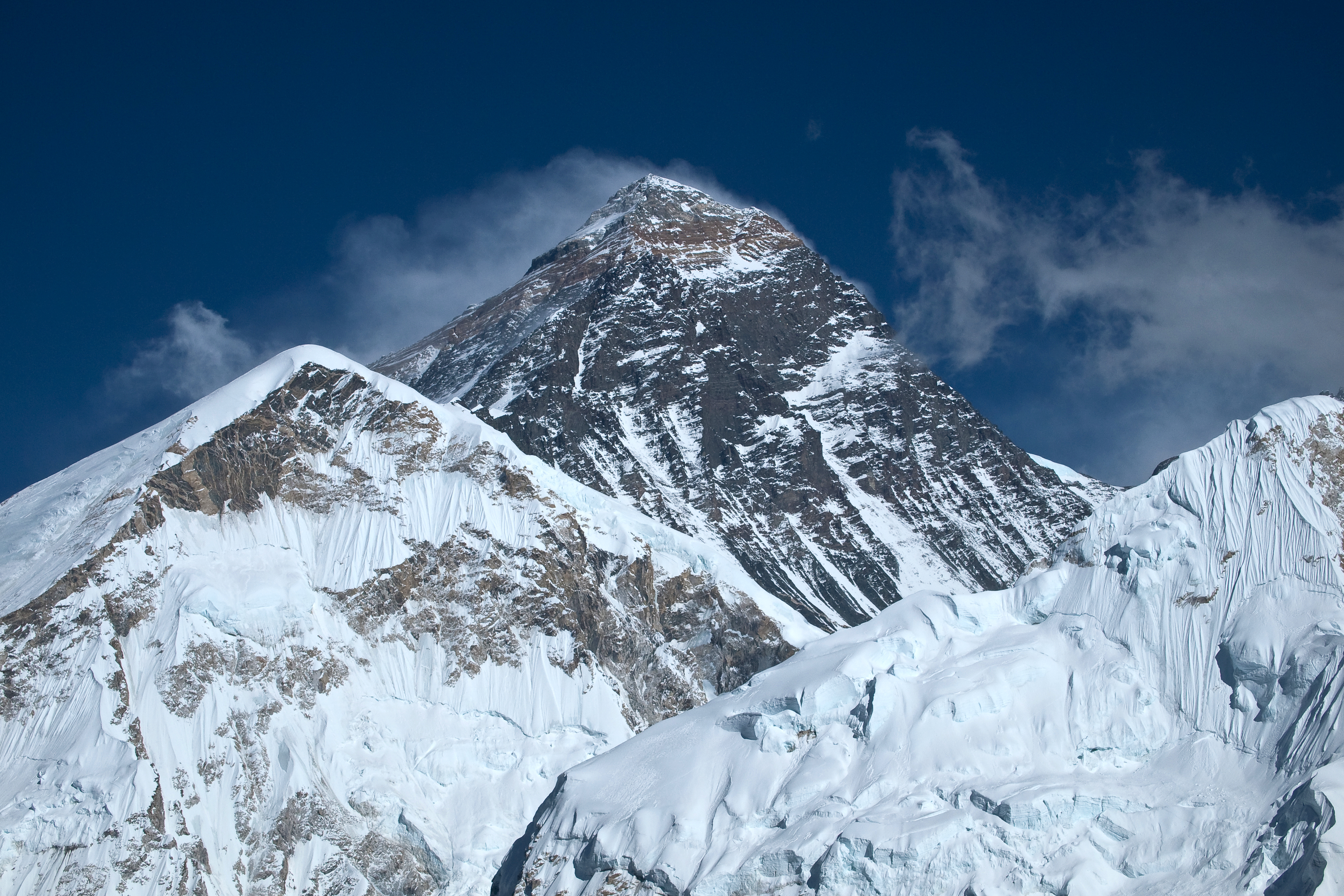
3. **Mount Everest, Nepal**The majestic summit of Mount Everest, soaring as the world’s tallest peak, stands as an irresistible beacon for extreme adventurers globally. Each year, countless climbers journey to Nepal, fueled by the ambition to conquer its heights. The ascent is far from a mere hike; it is an arduous odyssey demanding weeks of careful acclimatization to its progressively thinner atmosphere.
The primary antagonist on Everest is the extreme altitude itself. The severe lack of oxygen, known as hypoxia, can induce altitude sickness which, if unchecked, can rapidly become fatal. Beyond the oxygen-starved air, the mountain unleashes brutal cold, with temperatures consistently plunging far below freezing, testing human endurance and specialized equipment.
Everest’s unpredictable nature adds layers of danger. Sudden, ferocious storms can sweep in, transforming the mountain into a death trap. Avalanches, another frequent hazard, thunder down slopes, burying everything in their path. The climbing routes themselves are a treacherous labyrinth of steep, icy inclines where a single misstep can send a climber plummeting to their demise.
The grim reality of Everest is encapsulated by numerous bodies of climbers who perished on its slopes, many unrecovered due to extreme difficulty. Only those with extensive experience and rigorous training should contemplate an ascent, always with reputable guides, quality gear, and supplemental oxygen. Slowly acclimatizing, recognizing altitude sickness symptoms, and knowing when to retreat are essential life-preserving mandates on this iconic, yet deadly, peak.
Read more about: Where Did Travelers Fall In Love? Unforgettable Destinations Revealed

4. **Cliffs of Moher, Ireland**Perched dramatically on Ireland’s rugged west coast, the Cliffs of Moher offer an undeniably breathtaking spectacle, drawing countless visitors to gaze upon their formidable rise from the Atlantic. These natural titans present views so profound they are often considered a mandatory pilgrimage for travelers seeking nature’s raw grandeur. As visitors stroll along maintained paths, the sheer drop into the churning ocean below is both humbling and awe-inspiring, a quintessential Irish vista.
However, beauty here is juxtaposed with inherent danger. In many sections, the towering sea cliffs remain devoid of protective barriers, leaving a direct, perilous interface between land and abyss. The primary and most terrifying risk is a catastrophic fall. The urge to capture a “perfect” photograph often tempts individuals perilously close to the edge, where ground can be uneven and treacherous, particularly after rainfall.
Compounding this danger are sudden, powerful gusts of wind that frequently whip across the coast. These unexpected forces can easily throw a person off balance, sending them plummeting hundreds of feet below. Tragically, a number of accidents and fatalities bear somber witness to the consequences of ignoring explicit safety warnings posted throughout the site.
To enjoy the profound majesty of the Cliffs of Moher safely, adherence to all designated walking trails and remaining strictly behind safety barriers is crucial. Disregarding these boundaries, no matter the perceived photographic reward, is an ill-advised gamble with potentially fatal stakes. Vigilance is important during windy conditions or when ground is muddy, and constant supervision of children is essential. It is always wiser to admire this natural wonder from a secure vantage point than to flirt with disaster.

5. **Mount Washington, USA**In the heart of New Hampshire, Mount Washington carries an ominous reputation as the “home of the world’s worst weather.” Despite its relatively modest height, this peak has recorded some of the highest wind speeds ever documented. This unique, often brutal, weather system draws outdoor enthusiasts who seek the challenge of its hiking trails, skiing, and the bragging rights of summiting such a notoriously unpredictable mountain.
The mountain’s aesthetic appeal is undeniable, yet its beauty can swiftly give way to life-threatening conditions. The most prevalent danger is hypothermia, a relentless threat that can manifest even in summer due to rapid temperature drops. Winds, frequently exceeding 160 km/h (100 mph), are a physical force capable of literally knocking people off their feet, particularly near the exposed summit.
Dense fog often blankets the higher elevations, severely reducing visibility and rendering navigation impossible. This phenomenon can disorient hikers, leading them astray and increasing the risk of getting lost in a rapidly deteriorating environment. The mountain’s history is sadly punctuated by numerous accidents, many resulting from these sudden weather shifts, leading to exposure and, in too many instances, fatalities among the unprepared.
For those contemplating an ascent, continuous monitoring of weather forecasts is non-negotiable. Proper layered clothing and comprehensive emergency supplies are essential, even for a day hike. The cardinal rule on Mount Washington is to know when to turn back; pushing through worsening conditions is a grave error. Sticking to marked trails is vital, and for less experienced individuals, utilizing the guided shuttle or train to the summit offers a safer alternative.
Read more about: From Red Carpets to Rustic Retreats: 15 Hollywood Stars Who Traded Glamour for a Simpler Life Away from the Spotlight

6. **New Smyrna Beach, Florida**Nestled along Florida’s sunny coastline, New Smyrna Beach presents itself as a quintessential destination for surfers and beach lovers, boasting warm waters and consistent waves. It’s a place where families unwind and surfers chase the perfect swell, all within a casual, inviting beach town ambiance. However, beneath its idyllic surface, this seemingly tranquil stretch holds a disquieting distinction: it has garnered a reputation as the “shark attack capital of the world.”
The predominant danger here is, unequivocally, the frequent incidence of shark encounters. The unique ocean ecosystem off these shores creates a consistent convergence of bull sharks and other species with human activities, particularly surfing and swimming. While most shark bites recorded in this area are not fatal, they possess the capacity to inflict serious, life-altering injuries. Even wading in the shallow water carries a degree of risk, as smaller sharks are known to approach the shoreline.
Beyond the specific threat of sharks, the waters also present typical coastal hazards such as strong currents. However, it is the pervasive presence of sharks that truly sets this location apart, demanding heightened vigilance from anyone entering the ocean. The interaction between human recreation and marine predation is simply more pronounced here.
Heeding local warnings and understanding beach flag signals concerning marine activity are critical for safety. It’s advisable to avoid swimming or surfing during dawn or dusk, when sharks feed more actively. Refraining from wearing shiny jewelry or bright clothing, and staying in groups in the water, can significantly reduce risk. Observing for signs of bait fish schooling or diving birds—indicators of predatory fish activity—is also wise. Staying close to shore ensures that help is readily accessible, should an unforeseen incident occur.
Read more about: America’s Used Car Market Revealed: Are You Driving One of the Top 15 Most Popular Models?
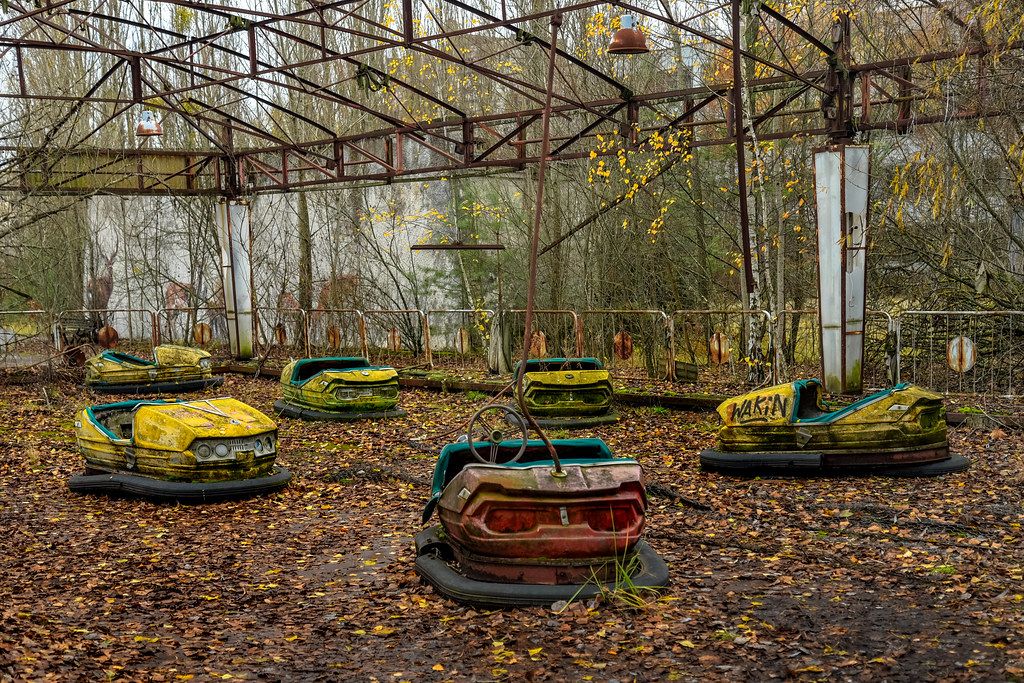
7. **Pripyat, Ukraine**Frozen in time and cloaked in eerie silence, the ghost city of Pripyat in Ukraine stands as a stark monument to profound technological failure. Once a vibrant urban center serving the workers of the Chernobyl Nuclear Power Plant, it was abruptly evacuated in 1986 following the infamous disaster. Today, Pripyat offers a haunting, poignant glimpse into a past abruptly halted, drawing adventure tourists and history enthusiasts alike into its deserted apartment blocks, derelict schools, and a silent amusement park.
Visiting Pripyat, even as part of an official guided tour within the Chernobyl Exclusion Zone, is far from a typical holiday. Primary dangers stem from persistent, albeit diminished, radiation levels and the extensive decay of its infrastructure. Pockets of dangerously high radiation can still be found, and direct contact with contaminated objects or soil in certain areas can lead to harmful exposure.
Compounding the radiological risks is the sheer physical hazard posed by decades of neglect. Buildings, once bustling, are now crumbling husks; floors, walls, and ceilings could collapse without warning, turning exploration into a perilous gamble. The zone is also home to wild animals, including wolves and stray dogs, whose unpredictable behavior adds another layer of caution. Even walking can stir up radioactive dust, emphasizing the need for protective measures.
Therefore, only official, guided tours should be considered, with strict adherence to all instructions from guides who possess intimate knowledge of safe zones and permissible durations. Wearing long sleeves, pants, and sturdy boots minimizes skin exposure, and a mask can prevent inhalation of dust. Crucially, no artifacts should ever be touched or taken, and supplied Geiger counters should monitor personal exposure. Limiting time in high-radiation areas and diligently following all post-tour decontamination procedures are absolute necessities.
Navigating the globe reveals that danger doesn’t always wear the stark face of a desert or a mountain peak; sometimes, it lurks within the vibrant chaos of a city, the silent depths of a once-idyllic island, or even the unseen forces of a natural wonder. For the intrepid traveler, understanding these subtle, yet potent, threats is paramount to transforming a potentially perilous journey into an informed adventure. Our journey continues, delving into eight more locales where the extraordinary demands an equally extraordinary level of caution, offering a deeper look into the world’s most captivating, yet risky, destinations.
Read more about: Ukraine’s Enduring Ordeal: A Deep Dive into Centuries of Conflict, Resilience, and Geopolitical Imperatives for the Modern Era
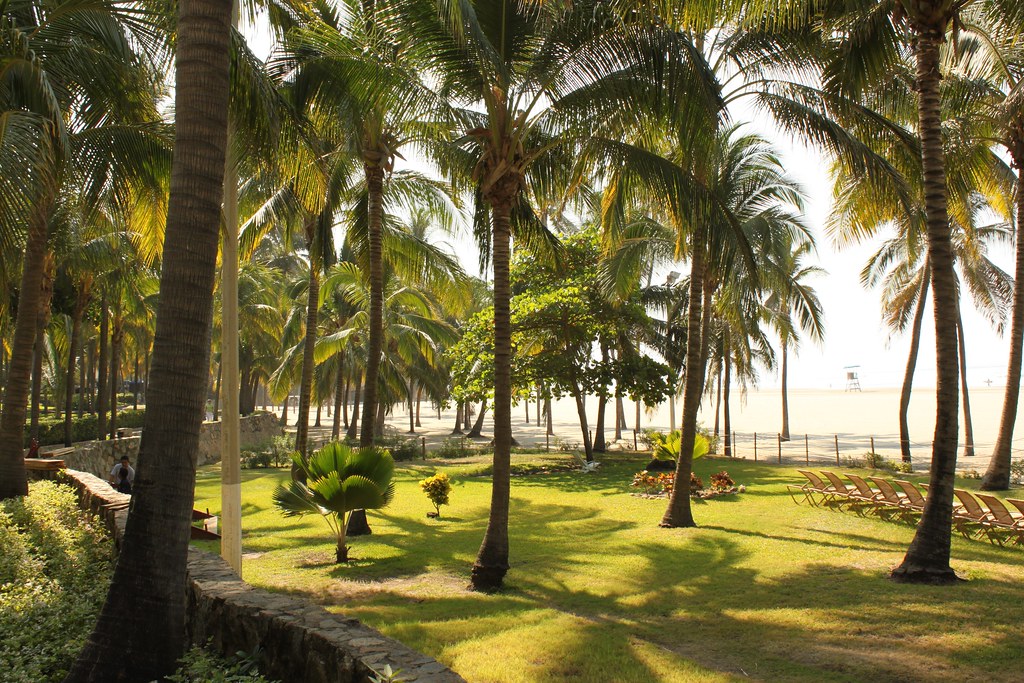
8. **Acapulco, Mexico**Once a dazzling jewel on Mexico’s Pacific coast, Acapulco captivated Hollywood stars and jet-setters with its glamorous beaches and vibrant nightlife. Today, the city still extends an invitation with its warm waters and scenic bays, particularly appealing to visitors from within Mexico. Yet, beneath this appealing facade, the city’s narrative has taken a somber turn, with a pervasive shadow of criminal activity obscuring much of its former luster, creating a complex and often dangerous environment for the unprepared.
The primary concern for any visitor to Acapulco today stems from the alarmingly high crime and violence rates. Tourists can inadvertently find themselves targeted for various illicit activities, ranging from simple theft and muggings to more severe incidents. The presence of drug cartels has unfortunately led to a surge in kidnappings and shootings, casting a chilling pall over what was once a carefree resort haven. These dangers are not confined to specific dark alleyways but can arise unexpectedly, impacting general security.
Petty crimes are also a frequent occurrence, particularly within crowded markets and popular tourist zones, where pickpocketing remains a constant threat. This unfortunate reality demands a heightened state of awareness from anyone exploring the city, reminding them that while the beauty of Acapulco remains, the underlying risks have intensified significantly, requiring a vigilant approach to personal safety. The contrast between its natural splendor and its urban perils creates a unique tension.
For those venturing to Acapulco, prioritizing safety means selecting well-secured resorts or hotels, particularly those with strong safety reviews. It is strongly advised to steer clear of downtown areas or any isolated spots, especially after nightfall. Discretion is key: avoid displaying expensive jewelry or carrying large sums of cash. Utilizing only official taxis or transportation services arranged directly by your hotel can circumvent potential issues, and paying close attention to any local authority warnings is always a wise course of action.

9. **Kingston, Jamaica**Kingston, Jamaica’s vibrant capital, pulses with the rhythm of reggae music and serves as the authentic heart of the island’s rich culture. It’s a city that beckons with lively street scenes, a profound musical history, and a culinary landscape that offers genuine local flavors, drawing tourists eager to experience a slice of Jamaican city life beyond the more common beach resorts. Yet, like many bustling urban centers, Kingston possesses a complex duality, marked by neighborhoods grappling with crime and significant social challenges.
The risks for travelers in Kingston are largely concentrated around opportunistic crime, primarily theft and armed robberies, which can escalate swiftly if one strays into less secure areas. The city also contending with specific parts that are under the sway of various gangs, where territorial disputes can, unfortunately, spill over into acts of violence. Such dynamics mean that a tourist who appears conspicuously lost or vulnerable may inadvertently become a target, underscoring the vital need for an informed and cautious approach to exploration.
Beyond the more direct threats, even routine activities like driving through certain districts during nighttime hours can carry an elevated risk, highlighting the unpredictable nature of the city’s security landscape. These inherent dangers underscore the importance of understanding Kingston’s intricacies and not simply approaching it with the same casualness one might a tranquil beach. Its raw authenticity, while appealing, necessitates a robust awareness of one’s surroundings at all times.
To mitigate these risks effectively, thorough research into Kingston’s safer districts is essential, with a strict adherence to staying within these identified zones. Opting to hire a trusted local guide or booking tours through reputable companies can provide invaluable security and insight. It is paramount to avoid walking alone after dark, and to only utilize official, clearly marked taxis or transport services. Keeping valuables out of plain sight and maintaining an alert posture in crowded spaces are fundamental precautions for a safer experience in this culturally rich, yet often challenging, city.
Read more about: Boxing Icon George Foreman—Two-Time Heavyweight Champ and Cultural Legend, Dies at 76

10. **Rio de Janeiro, Brazil**Rio de Janeiro, a city synonymous with breathtaking natural beauty, iconic landmarks like Christ the Redeemer, and the electrifying spectacle of Carnival, draws millions worldwide with its promise of vibrant culture and unforgettable experiences. Its legendary beaches, such as Copacabana, glisten under the sun, creating an almost mythical allure. However, this visual splendor exists in stark contrast with the city’s significant challenges, primarily rooted in the poverty of its favelas and a notoriously high crime rate that can often jar visitors.
The most pervasive dangers for tourists in Rio include an array of street crimes, with muggings and pickpocketing being particularly common. These incidents often occur in the very areas most frequented by tourists, including bustling beaches, public transport, and popular attractions, creating a constant need for vigilance. Reports of robberies, sometimes carried out at knifepoint or even gunpoint, are a stark reminder of the underlying tension that can permeate the urban landscape, especially for those venturing into unfamiliar neighborhoods.
Beyond the opportunistic thefts, visitors also face the possibility of falling victim to elaborate scams designed to exploit foreigners. In more severe, though less frequent, cases, tourists have found themselves caught in the crossfire of gang-related violence, particularly if they venture too far off the well-trodden tourist paths and into areas where the city’s social struggles are more acutely felt. This intricate blend of beauty and peril means every step must be taken with mindful consideration.
To navigate Rio safely, it is crucial to remain constantly alert while walking, carrying only the minimum necessary cash and cards, and leaving valuable items like expensive watches or jewelry securely at your accommodation. Relying on ride-sharing services or official taxis for transport is far safer than walking long distances. Sticking rigorously to well-known areas, especially around the beaches and city center, and absolutely avoiding favelas unless as part of a reputable, guided tour, are non-negotiable safety rules. Vigilance, particularly after dark, is your best companion in this mesmerizing, yet complex, metropolis.
Read more about: 10 SUVs That Hit 40 MPG Highway—And They’re Not Even Hybrids

11. **Half Dome, Yosemite National Park, California**Nestled within the breathtaking expanse of Yosemite National Park, Half Dome stands as an iconic granite monolith, its distinctive shape a magnet for hikers and adventurers from across the globe. The formidable 14-mile round-trip trail culminating in an assisted cable climb promises panoramic views from the summit that are truly incredible and undeniably tempting. Yet, this ascent is far from a casual stroll; it is a profoundly strenuous odyssey, demanding considerable physical fortitude and not suitable for the faint of heart.
The most significant danger inherent in conquering Half Dome is the ever-present risk of a deadly fall. Over the years, numerous individuals have tragically slipped from its steep, exposed sides, especially when the rock face becomes slick with rain or morning dew. The sheer verticality of the climb, particularly on the famed cable section, allows for little margin of error, transforming a single misstep into a potentially fatal plunge, a stark reminder of nature’s unforgiving power.
Compounding this immediate physical peril is the notoriously unpredictable weather of the Sierra Nevada mountains. Thunderstorms can materialize with astonishing speed, engulfing the peak in violent downpours and unleashing dangerous lightning strikes. Being caught on the exposed cables or at the summit during such an event poses an extreme and potentially lethal risk of being struck. Even without such dramatic weather, the sheer physical exertion required can lead to exhaustion and severe dehydration for those who underestimate the trail’s relentless difficulty.
Attempting Half Dome demands meticulous preparation, starting with securing a permit and ensuring you are in excellent physical condition. Beginning your hike in the early hours of the day allows ample time and provides a buffer against afternoon storms; consistently monitoring weather forecasts is absolutely critical, and a willingness to turn back if storm clouds gather is a life-saving decision. Wearing shoes with superior grip and utilizing gloves for the metal cables are essential. Carrying abundant water and taking frequent breaks to combat fatigue are vital, and it is imperative to never venture beyond the designated cable route or to climb during unsafe conditions, always heeding the expert advice of park rangers.
Read more about: California: Unpacking the Golden State’s Vast Diversity, Economic Might, and Enduring Legacy
12. **Bangkok, Thailand**Bangkok, Thailand’s bustling and vibrant capital, offers a captivating fusion of ancient traditions and modern dynamism, famed for its tantalizing street food, revered temples, and electrifying nightlife. Millions of tourists flock here annually, drawn by its rich cultural tapestry and the promise of unforgettable experiences. While Bangkok generally extends a warm welcome, like any sprawling metropolis, it harbors a more shadowed side. The very crowds and lively atmosphere that make its tourist hotspots so appealing also, unfortunately, attract opportunistic individuals eager to exploit unwary visitors.
The most prevalent risks for travelers in Bangkok revolve around petty crime, particularly pickpocketing and bag snatching, which are unfortunately common in densely packed areas. These can occur on the crowded Skytrain, in bustling night markets, or even on busy pedestrian streets, requiring visitors to maintain a high degree of situational awareness. Beyond these quick grabs, tourists may also encounter more elaborate scams, ranging from unscrupulous tuk-tuk drivers who drastically overcharge to convincing gem scams where unsuspecting individuals are sold utterly worthless trinkets.
More concerning incidents include reports of drinks being spiked at certain nightlife venues, often leading to robbery, underscoring the need for extreme caution in social settings. Furthermore, periods of political unrest or protests, while usually targeted at local governance, can unexpectedly erupt and potentially ensnare tourists caught unwittingly in the midst of the commotion. The sometimes unhelpful response from local police in minor crime cases, alongside broader issues of corruption, further complicates the recovery for victims.
To safeguard your journey through Bangkok, it is crucial to keep all valuables secure and out of sight, perhaps utilizing a money belt or ensuring bags are always zipped and worn front-facing in crowded spaces. A polite but firm refusal of unsolicited offers from strangers, especially those that sound suspiciously too good to be true, can prevent most scams. When using taxis or tuk-tuks, always ensure they are official, insist on using the meter, or agree on a fare beforehand. In bars or clubs, never leave your drink unattended. By exercising common sense and maintaining a healthy level of vigilance, visitors can largely enjoy Bangkok’s endless charms safely and without undue incident.
Read more about: The Unforgettable Saga: Every Twisty, Turny Moment in the Mariah Carey & Eminem Obsession

13. **Hawaii National Park, Hawaii**Within the captivating expanse of the Big Island, Hawaii Volcanoes National Park stands as a powerful testament to Earth’s primordial forces, drawing tourists eager to witness the raw, living geology of our planet. Home to Kilauea and Mauna Loa, two of the world’s most active volcanoes, the park offers a unique opportunity to observe glowing lava flows, feel the palpable heat from magma beneath the crust, and traverse fields of hardened lava. It’s an extraordinary landscape where one can literally walk upon creation, yet this beautiful, untamed display of Earth’s power comes with significant risks if conditions shift or one ventures too close.
The environment within this volcanic region can turn deadly with frightening speed if conditions change. The most direct dangers include unpredictable lava flows that can suddenly obstruct paths or engulf entire areas without warning during an eruption. The lava itself reaches incredibly high temperatures, posing a severe burn risk or worse to anyone who dares to approach too closely or touch it. This dynamic landscape demands utmost respect, as its beauty is matched only by its formidable power.
Beyond the immediate hazards of molten rock, the volcanoes also release a dangerous cocktail of poisonous gases, primarily sulfur dioxide. Inhaling these fumes can range from causing severe respiratory issues to proving fatal, particularly for individuals with pre-existing conditions or those exposed for extended periods. Fine ash from eruptions can further impair breathing and eyesight. Tragically, there have been documented cases of visitors, drawn too close by curiosity, being caught in explosive bursts of scalding steam and rock near lava ocean entries, demonstrating the volatile nature of these geological spectacles.
Safety in Hawaii Volcanoes National Park hinges on constant vigilance. Prior to and during your visit, it is imperative to check the current volcano alert levels and any park updates, as conditions can change rapidly. Staying strictly on marked trails and within designated viewing areas is non-negotiable; never, under any circumstances, cross safety barriers to get nearer to lava. Should park rangers close a section due to elevated toxic gas levels, their directives must be taken with the utmost seriousness. Carrying a mask or bandana can offer a temporary shield against unexpected ash or fumes, and maintaining a respectful distance from active lava is paramount. Always be prepared with a plan for rapid departure should conditions deteriorate, and follow all ranger instructions without hesitation.
Read more about: Unpacking America: 14 Mind-Blowing Facts About the USA You Absolutely Need to Know!
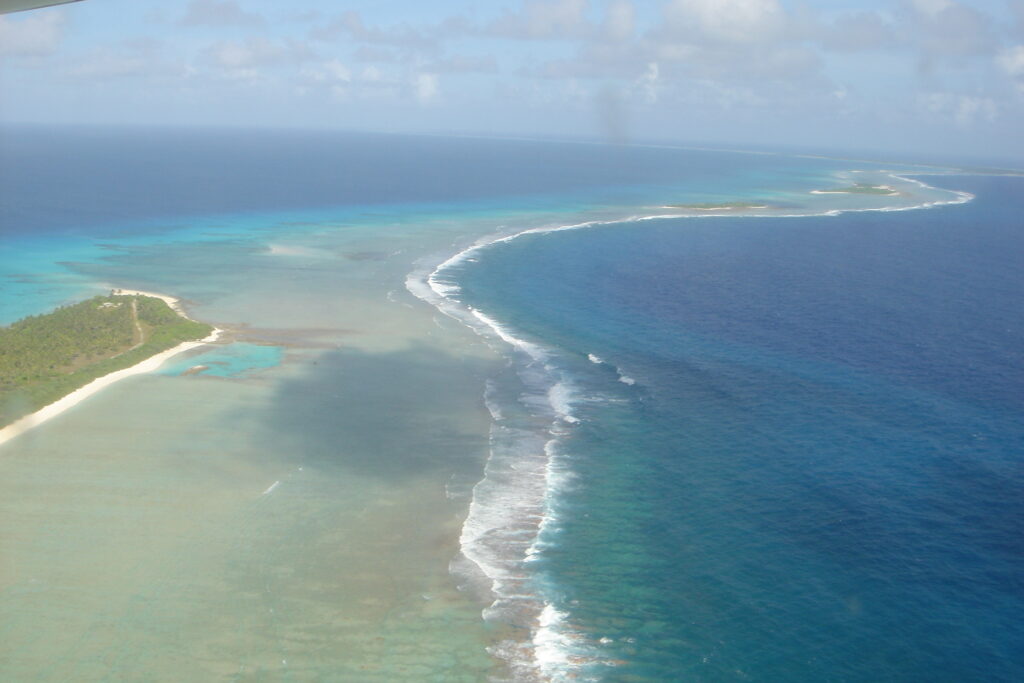
14. **Bikini Atoll, The Marshall Islands**From a distant glance, Bikini Atoll appears to be the quintessential image of a pristine Pacific island paradise: a delicate ring of coral islands, crystalline waters teeming with marine life, and swaying palm trees inviting tranquility. This natural allure might suggest an idyllic tropical getaway, but its history tells a far more complex and sobering tale. Between 1946 and 1958, this picturesque haven became the site of numerous atomic bomb explosions conducted by the United States, irrevocably altering its destiny and leaving it deeply irradiated.
The most profound danger persisting on Bikini Atoll today is the lingering presence of residual radiation from these devastating nuclear tests. The soil and even certain locally grown food crops, particularly those with deep roots, still contain unsafe levels of contamination. Extended stays or, indeed, any attempt to reside on the atoll, would inevitably lead to significant radiation exposure and a heightened risk of related illnesses. Even short visits necessitate extreme caution concerning what one touches or, more critically, consumes.
While swimming in the atoll’s clear waters is generally deemed safe regarding radiation levels, a subtle concern remains regarding minor cuts or contact with sediment that could harbor radioactive particles, adding another layer of unseen risk. Furthermore, the sheer remoteness of Bikini Atoll means that medical facilities are virtually non-existent. Should any health issue arise, or, gravely, should radiation sickness manifest, obtaining prompt and adequate medical attention would be exceedingly difficult, underscoring the isolation and inherent fragility of any visit.
Visiting Bikini Atoll is not a recommended casual tourist endeavor and should only be considered for highly specific reasons, such as sanctioned dive expeditions or research, and always with comprehensive precautions. Such visits must be part of an organized tour or scientific research trip that rigorously monitors radiation levels. Crucially, consuming local food or water is strictly forbidden; visitors must bring all their own supplies. Limiting time on land, where contamination is highest, and meticulously adhering to all guidelines provided by radiation experts, including wearing shoes at all times to avoid direct soil contact, are absolute imperatives. A thorough safety briefing before setting foot on this beautiful, yet historically scarred, atoll is essential.
Read more about: Splash into History: 14 Bikini-Centric Films That Sizzled and Defined Cinematic Beach Glamour
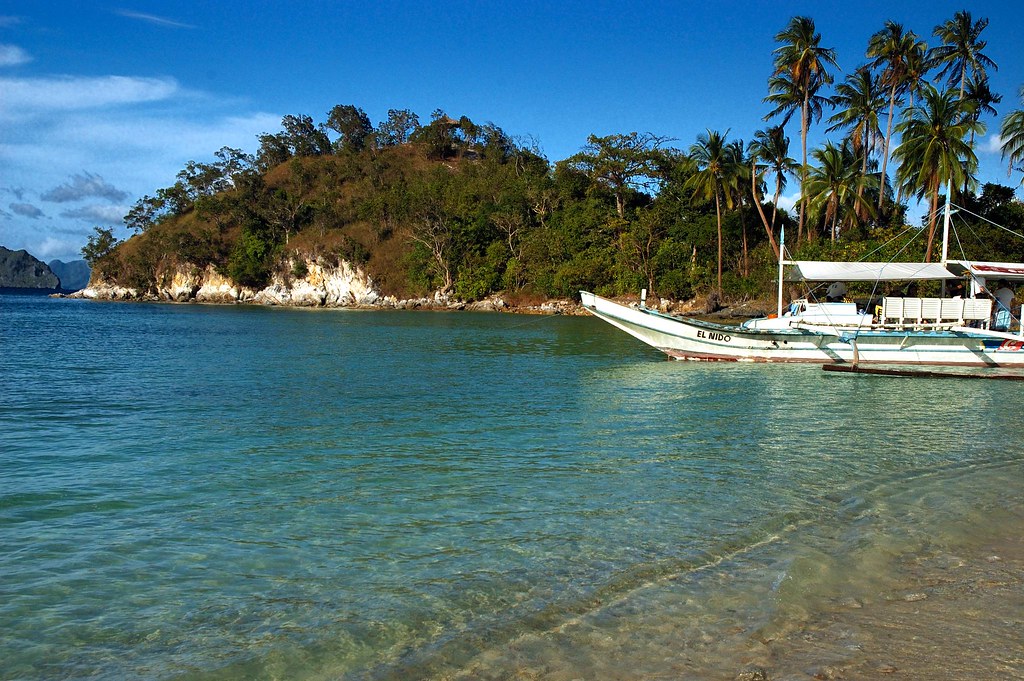
15. **Snake Island, Brazil**Off the sun-drenched coast of Brazil, a small landmass known locally as Ilha da Queimada Grande, or more ominously, Snake Island, shimmers with the deceptive allure of any other lush, green Atlantic island. However, this seemingly verdant paradise conceals a terrifying truth: it is famously, and uniquely, infested with one of the most deadly serpents on Earth, the golden lancehead viper. With thousands of these highly venomous snakes inhabiting its modest expanse, stepping foot on this island is an almost certain invitation to a perilous encounter.
The risks on Snake Island are singular and overwhelming: virtually every step taken on its terrain comes with the immediate threat of a snake bite. The golden lancehead’s venom is exceptionally potent, capable of causing a terrifying array of severe symptoms, including organ failure, widespread tissue necrosis, and brain hemorrhaging, which, if left untreated, inevitably leads to death. Given the astonishing density of these reptiles, an encounter with one, or indeed many, is not merely probable but virtually guaranteed for anyone venturing onto the island.
The fatal consequences of a bite are amplified by the island’s utter isolation. Devoid of any hospitals or medical facilities, the logistical challenge of returning to the mainland for crucial antivenom in time to counteract the rapidly acting venom would be an extraordinary, and likely impossible, feat. Even experienced herpetologists, granted rare sanctioned access, approach this island with the most extreme caution, underscoring the unparalleled danger it presents to human life, a unique and forbidding natural defense.
For the general public, the most definitive and crucial safety tip regarding Snake Island is simple: do not, under any circumstances, attempt to visit it unless you possess official, rare permission and are part of a highly trained scientific expedition. The Brazilian government has wisely closed the island to the public for very good reason. If, by some remote chance, one is part of a permitted group, wearing high snake-proof boots and thick, protective clothing is absolutely essential, along with exercising profound caution with every step and hand placement. In truth, the safest and most sensible approach is to respect the ban entirely and admire this fascinating, yet deadly, island from a respectful distance by boat, acknowledging its untamed, venomous splendor from afar.
Read more about: Beyond the Veil: Unearthing 13 Highly Intriguing Forbidden Destinations
The world, in all its expansive glory, continues to hold places that ignite the deepest sense of wonder alongside an equally profound sense of caution. From the crime-ridden streets of once-glamorous cities to the volcanic heartlands, the radioactive scars of history, and islands where nature’s most potent defenses lie in wait, these destinations beckon not with ease, but with a challenge. They are testament to Earth’s untamed spirit, reminders that some of the most extraordinary experiences demand the most meticulous preparation and a deep respect for the profound forces at play. For those who heed the warnings and approach with an informed sense of adventure, these perilous spots offer not just danger, but an unparalleled glimpse into the wild, unpredictable heart of our planet.

